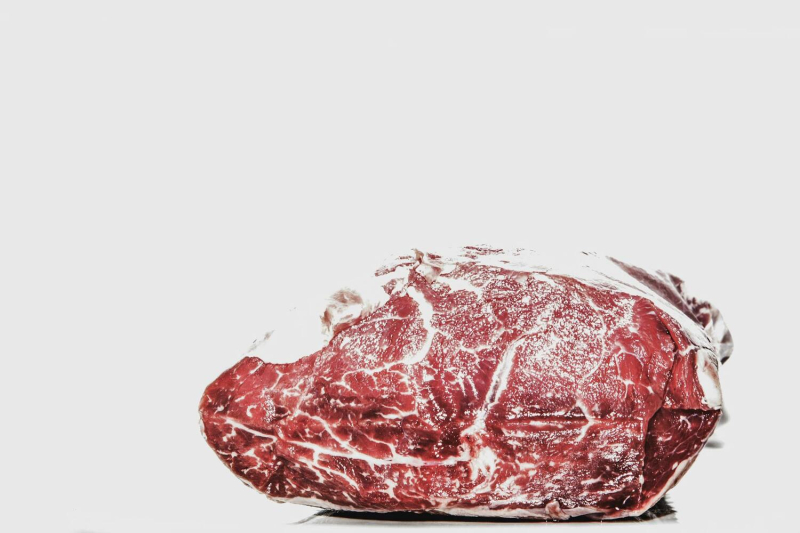
© Markus Spiske/Pexels
« Meat allowed the human species to develop », « iron and vitamin B12 intake were essential for brain development » : you've probably heard these phrases before. They're not entirely false, but they're not entirely true either, other factors come into the equation.
A study published on January 16 in the journal Science has just brought us some very interesting data which further support this theory. Fossils of Australopithecines (potential ancestors of modern humans who lived about 4 to 2 million years ago) found in the Sterkfontein Caves in South Africa have provided valuable information about their diet. How ? Thanks to microscopic traces preserved on their dental enamel.
Humanity's first meals
To unlock the secrets of the diet of our most distant ancestors, researchers from the laboratories of the Max Planck Institute for Chemistry and the University of the Witwatersrand have developed a specific technique. This is based on nitrogen isotopes, these variations of the same element that accumulate differently depending on the diet.
They thus analyzed the ratio between two forms of nitrogen: 15N and 14N, which act as molecular tracers. The more meat an animal consumes, the more the proportion of 15N increases in its tissues, leaving an indelible chemical imprint of its eating habits. By analyzing the ratio of 15N to 14N isotopes in fossil tooth enamel, scientists can now determine the individual's position in the food chain.
Until now, paleontologists had to content themselves with analyzing bone collagen or dentin, tissues that degrade over millennia. It was impossible to go back more than 300,000 yearsdue to this degradation, which formed a real veil completely opaque, which blurred the analysis of ancient diets. Tooth enamel being the most resistant tissue in the body of mammals, it preserves these isotopic signatures like a coded message crossing the ages and thanks to it, it is possible to trace millions of years of dietary evolution.
Australopithecus: not really meat eaters
To decode what the seven fossils found had to tell us, scientists organized a vast comparative study, featuring a whole prehistoric bestiary. Monkeys, antelopes or other predators such as hyenas, jackals and big cats. Each species was the equivalent of a different link in the food chain three million years ago.
It turns out that the isotopic signatures inscribed in the tooth enamel of Australopithecines prove that they ate mainly foods from plant sources. Their teeth bear the chemical imprint of a diet dominated by plants, with only a few rare episodes of meat consumption. The traces found therefore bring them closer to peaceful herbivores than to the predators of their time.
200% Deposit Bonus up to €3,000 180% First Deposit Bonus up to $20,000While the scientific community had long seen meat consumption as the main driver of human brain development, the reality is much more nuanced. It also means that the behaviours observed in Australopithecines – their ability to use rudimentary tools, their complex social lives – do not originate solely from a meat diet.
The great story of human evolution rewritten
For Dr Dominic Stratford, director of this research, the conclusion is clear: ” This study demonstrates unequivocally that Australopithecines in South Africa did not consume significant quantities of meat three million years ago. It represents a major advance in our ability to analyze diets and the position of species in the food chain over a time scale of several million years ».
Our evolutionary history is thus enriched with a new chapter. If our distant South African ancestors favored plants, the regular adoption of a meat diet would have occurred later in our evolutionary history, or in another geographical region.
This is why we must consider today; even more in the light of this study; that the development of human cognitive abilities as the result of multiple interactions. Other elements probably contributed together to the progressive increase in brain size observed in more recent hominids. Social factors (group living, cultural transmission), genetic factors (mutations, natural selection) or linked to lifestyle (tool making, mastery of fire).
The adoption of meat by our ancestors was gradual and was an evolutionary response to the climatic upheavals that occurred about 2.5 million years ago in Africa. As lush forests gradually gave way to arid savannahs, the first representatives of the genus Homo (1 to 1.5 million years after the Australopithecus) needed to diversify their diet in the face of the scarcity of plant resources.
Cut stone tools, which appeared around 2.6 million years ago, first allowed scavenging and then, later, hunting, which allowed them to access meat resources more easily. This dietary transition triggered a series of physiological adaptations: anatomical modifications with the reduction of jaws and teeth, evolution of the digestive system, but also profound social transformations where the sharing of meat catalyzed new cooperative behaviors. However, this study shows us that this new way of eating was not the only determining factor in this progression, even if it undoubtedly played an important role in the evolution of Australopithecines towards Homo sapiens.
- An analysis of the dental enamel of Australopithecines revealed that they had a mainly plant-based diet, with very little meat consumption.
- Contrary to popular belief, meat was not the only driver of human brain development; other factors such as group living and tool use also played a key role.
- The gradual introduction of meat into the diet of early Homo was a necessary adaptation, but this study calls into question its central role in cognitive evolution.
📍 To not miss any Presse-citron news, follow us on Google News and WhatsApp.
[ ]

